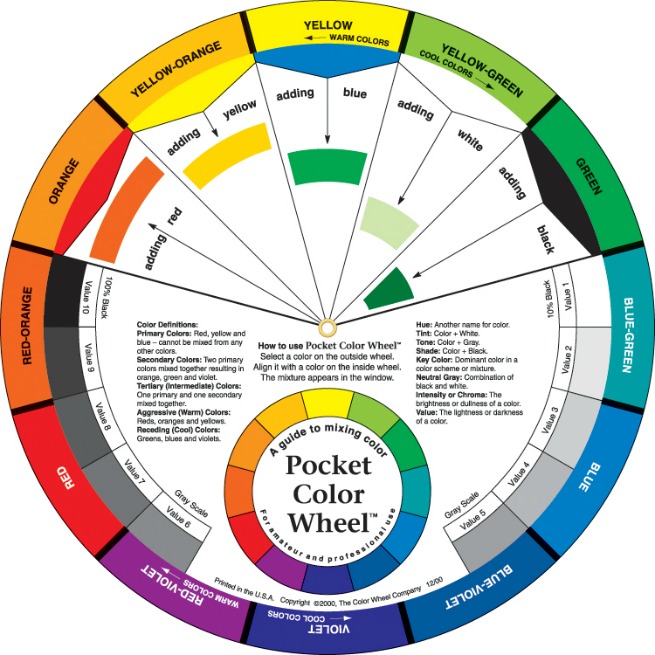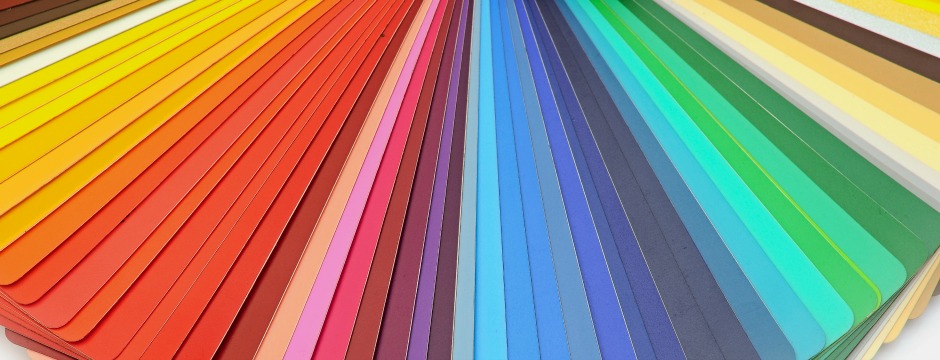Laminate flooring is an extremely popular choice, thanks to the range of colours, patterns and finishes available. It is a cost-effective, low-maintenance option and can replace the aesthetics of real wood. Your home reflects your style, and your choice of flooring is important in achieving the perfect look and feel, which is why it’s important to select a colour and style of laminate flooring that brings your room to life, compliments your furniture and walls, and provides you with a floor you’ll love for years to come.
With a range of options available, from a real wood look, to tiling effects, herringbone and stone, it can be tricky to know which colour and style to choose. This is why we have compiled this handy guide to help you make your laminate flooring choice.
Understanding Your Colours
When it comes to colour sourcing, you don’t have to be an interior designer to understand what will go best. A colour wheel can easily show you which colours will and won’t correspond. Start by finding your flooring's undertone and match accordingly using the wheel. For example, if you have a walnut flooring, with undertones of red, that will correspond to other warm colours such as yellow and orange. Likewise, grey flooring, which is a cool colour, will match well with other cool furnishings, for example, a blue or green sofa.

Related: A Guide to Different Flooring Grades
While sticking to the colour families can create a cohesive harmony, contrasting also works wonders. After deciphering your laminate floor shades, find the complementary colours which are opposite on the colour wheel. For example, flooring with hints of blue will go well with orange furnishings. These pairings create a contrast which will make both surfaces pop.
Choosing the right colour flooring for a room
Choosing the right colour flooring for your room will depend on the purpose of the room itself, the size, shape and desired final look. Using your understanding of colour theory, it’s easy to apply it to your shade of laminate flooring and work out what colour schemes will look perfect in that room.
Consider a room’s light source
How much light there is, and the source of that light could sway your decision on the colour of your flooring, and how that light impacts the desired final look and feel of the room. If a room has low natural light and the desire is to brighten the room, then dark wood, or a darker tile effect would not be suitable. However, if you’re looking to achieve a cosier feel ina room that lacks natural light, a darker flooring may be more appropriate to make it feel snug and intimate. If your room is flooded with natural light, you have the luxury of choice, and the colour of your flooring can largely depend on your final desired aesthetic.
Consider the ideal space you want to create
If you’re looking to make a room look bigger and brighter, then the colour of your flooring could be key. Choosing light-coloured flooring to compliment your furniture can open the room right up and create an illusion of size and space. Consider natural and neutral tones or light wood effect flooring. These choices are popular with people looking to make a room look bigger as they draw in natural sunlight and provide an open and airy feel.
Similarly, consider the mood and ambience you want to create. If you’re furnishing a space for a formal feel, then opt for a cooler tone of darker flooring. If you’re looking to create cosiness, then opt for a darker floor with a warm tone. For an airy and bright effect, choose a paler colour, with cooler shades achieving a more formal outcome than warmer shades. If you have a distinct style and want a more dramatic finish, then choose a patterned or tile effect to showcase your personality and distinct taste.
Consider the longevity of style vs personal taste
Your choice of flooring is an investment in your home, and choosing the right flooring now will hopefully mean it will last for years to come. Unlike other furnishings, wallpaper, paint and rugs, your flooring can be an expensive and arduous swap, if your tastes change. It’s important to consider whether your choice of flooring is versatile enough to complement different styles and trends in the future, particularly if you like to switch things up in your home regularly. Bolder, more distinct styles may become outdated quite quickly, as trends change. That said, your taste and personality are integral to your buying choice, so it’s about balancing longevity with your style.
White Laminate
If you have white laminate flooring, your options are very open as this will go with just about any colour and tone. If you’re looking to achieve a minimalist look, choose light or beige furnishings to create a timeless look. If you’re looking to create more personality, choose bright and bold coloured furniture, such as vivid orange, to create a contemporary feel - just be sure to colour match your choices to avoid colour clashes. Adding darker furnishings creates a sophisticated contrast and avoid avoid adding more white to the room as it could make the space too clinical..
Light Laminate
There are many options of light laminate flooring available, and it is a popular choice for people wishing to make a space look larger. Most light and pale laminate flooring colours tend to carry cool undertones of taupe or hints of a cool yellow. If this is the case, other cool colours are recommended. For example, furnishings of green and blue can work wonders. However, you can create a striking look by opting for furnishings that are darker, in turn creating contrast.
Beech Laminate
Beech laminate flooring is perfect for creating the illusion of real wood, as it is confusingly similar in look and feel. The surface texture looks and feels like real wood, and when walking on it you will hardly notice a difference. Characteristically light and slightly pinkish-brown in colouring, it can appear slightly yellowish when exposed to special light. Beech laminate is a popular choice for anyone wanting to choose a flooring that will stand the test of time, as it compliments virtually all colour schemes and is versatile in the event you wish to change your decor in years to come..
Grey Laminate
The cool, contemporary feel of grey laminate has seen it soar in popularity in recent years. It mimics the appearance of real wood flooring but is a high-quality photograph, finished with a transparent protective coating. It works well when matched with other cool colours. For example, mint greens or blues can create a striking space. Most people tend to accessorise grey flooring with other neutral colours for a minimalist look, however, if you want to add a touch of character and warmth to your room, don’t feel afraid to add a splash of yellow or blue to bring it to life.
Medium Laminate
Medium shades of laminate include standard oak and herringbone designs. Like beech and white laminate, most medium laminate shades will match nearly all colours as they aren’t overly light or dark. Depending on the look and feel you are going for, you can either darken and cosy up a room by adding darker, warmer tones, or you can brighten a room with medium laminate by adding neutral, light or bright furnishings. As most medium laminate floors have warm and yellow undertones, try colours such as yellow, orange or red for harmony.
Walnut Laminate
Walnut laminate flooring is a great addition to your home, creating a sophisticated feel, with its deep brown to purplish brown tones, pairing with a variety of decor. It works well with lighter colours to avoid making the room appear too heavy. Because walnut’s undertones tend to be red, you can match this flooring with a lighter orange, yellow or red shade. If you want to inject a little more colour and create a striking contrast, why not add elements of jade green to the room for a distinctive look?
Dark Laminate
If you’re looking to create a cosy and intimate feel, dark laminate could be the perfect choice for your room. Its cool, earthy palette compliments cooler shades of blues, greens and greys. However, to brighten up the space you could include a contrasting yellow or orange to add vibrancy and provide a modern twist. Dark laminate is a great way to mimic the feel of real wood, notably oak-effect flooring, and comes in a selection of different finishes including planks and herringbone andis great if you want to create a rustic feel.
Black Laminate
A bold, dramatic but striking choice could be black laminate. It’s sleek, it's stylish and it’s perfect for most rooms. A black laminate will work best with lighter colours to avoid making a room too dark and the great thing about it is that there’s no restriction on which colour work best, as black will go with just about anything. We’d recommend avoiding dark shades that could make the room too oppressive. It’s often popular to pair black floors with white furniture for a classic and timeless contrast, but be sure to consider lighting choices in the room for a touch of ambience.
What wall colours did you opt for? Let us know in the comments!
